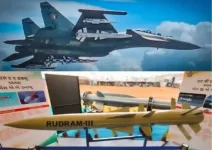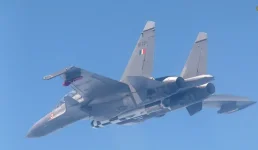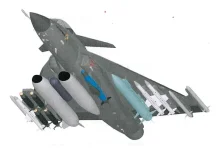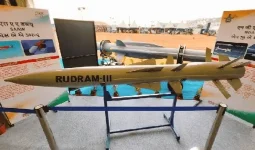- Views: 1K
- Replies: 12

India's indigenous air warfare capabilities achieved a significant milestone on May 29th with the successful test-firing of the Rudram-II air-to-surface missile. This marked the first full-configuration test of the weapon, launched from a Sukhoi Su-30MKI fighter jet off the coast of Odisha.
The Rudram-II, developed by the DRDO, is a "universal weapons system" designed for seamless integration into various Indian fighter jets. This includes the Su-30MKI, which can carry three Rudram-II missiles, as well as the upcoming Tejas MkII and potentially the Rafale in the future. The Tejas Mk1A will be able to carry two Rudram-II missiles.
Dual-Role Capability: Anti-Radiation and Ground Attack
The missile comes in two variants: an anti-radiation missile (ARM) and a ground-attack missile. The ARM variant is designed to neutralize enemy radar and communication systems, while the ground-attack variant can target a wide range of enemy assets.Technical Specifications and Future Trials
The Rudram-II boasts an impressive range of over 300km, potentially extending to 350km depending on launch altitudes. It is powered by a solid-propellant rocket motor and utilizes inertial and satellite navigation for precise mid-course targeting.The DRDO has planned further trials to assess various launch parameters before the missile system is cleared for production. The organization is also developing the Rudram-III, an air-to-surface missile with an even longer range of 550-600km.
The 800kg Rudram-II missile can carry a 200kg warhead, further enhancing its destructive power. While the exact specifications of the Rudram-III are not publicly available, its extended range and heavier weight suggest an even more formidable weapon.




